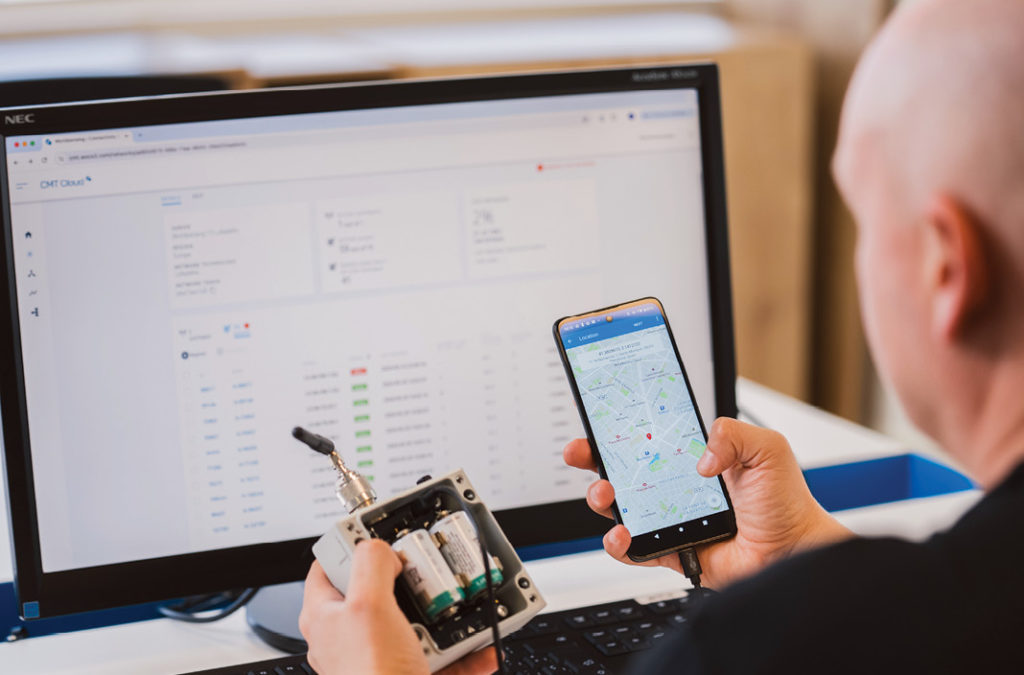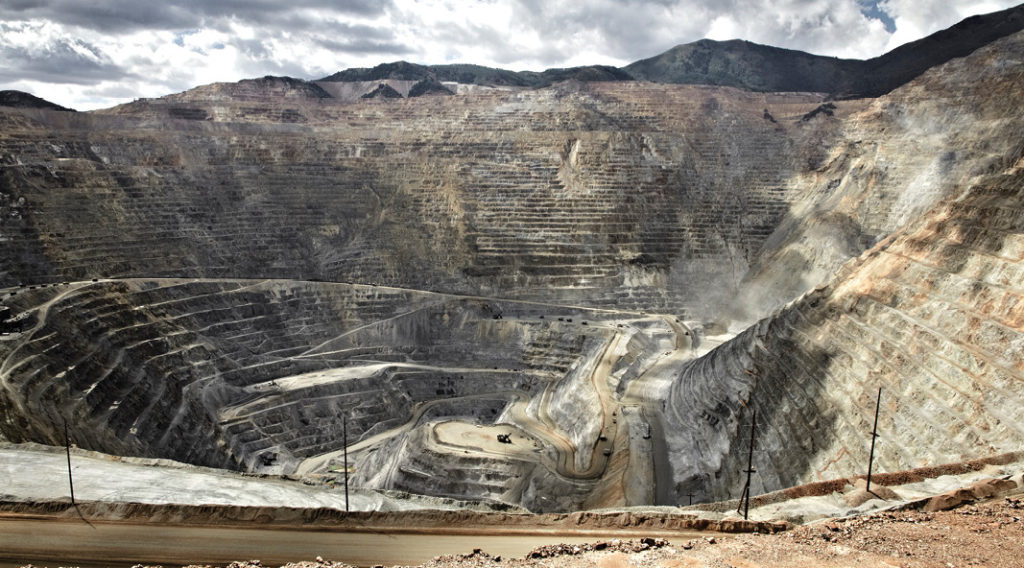Technology-enabled monitoring in the mining industry
The safety, operational, and business benefits

The mining industry continues to digitalize and leverage technology within day-to-day business operations. Mine operators and owners are adopting and deploying purpose-built, industry-specific technologies and applications designed to boost productivity and efficiency, navigate industry challenges like labour shortages and increased regulation, and improve safety for workers and surrounding communities.
Now more than ever, the need for mining companies to accelerate their embrace of technology is critical, given the range of industry challenges at hand which include the following:
Increasing demand: The insatiable thirst among consumers for smartphones, electric vehicles, solar panels, and just about anything that requires a battery is driving demand for the minerals extracted by mining activity. Industry analysts believe there will be a need for hundreds of new mines. Existing and new mines must operate with maximum productivity and speed to meet demand.
Labour concerns: Securing skilled and experienced labour that can replace an aging mining workforce is a rampant challenge across the industry. The migration of talent to other industries means mining companies need to turn to technology and pursue opportunities to automate and remotely operate some of the activities that were once done manually and on-site.
Safety a pervasive issue: Mining is an inherently dangerous industry. Despite advances in workplace training and the introduction of many new safety initiatives, fatal workplace injuries rose 41% in 2023, according to the U.S. Department of Labour Statistics. Improving safety is of paramount concern to mining operators.
Environmental impact: Even under normal conditions, mining is harmful to the environment, causing sinkholes, erosion, and chemical emissions. Failures and accidents can be catastrophic. Operators are under increased scrutiny and pressure to minimize their ecological impact, including reducing greenhouse gas (GHG) emissions and protecting surrounding lands where mining activity is taking place.
To address these and other challenges and remain competitive, while capitalizing on growth opportunities, mining companies are turning to a range of technologies to improve operations and safety. Mine site monitoring is a key area where mine owners and operators can deploy next-generation technologies to enhance operational efficiency, lower costs, and dramatically reduce risk.
The critical and growing need for monitoring
The hazardous nature of mining sites, where huge machines are continuously digging and excavating hazardous materials, and where harmful chemicals are frequently used in mining processes, makes the ongoing monitoring of a mine site crucial for the safety of workers on-site and the surrounding community. A pit wall collapse or leach pad leakage can have serious health, safety, and environmental consequences. The more that can be monitored and tracked in real-time, the greater the opportunity to identify and address minor issues before they become major ones that imperil business operations and lives.

There is no shortage of conditions and factors to monitor at any given mine site.
Stability: As digging happens and materials are extracted and moved from one location to the next, miners need to note the emergence of any displacements, or lateral or horizontal deformations, and flag any changes as settlement and movement of earth occurs.
Water: Water management is always a major concern in mining operations. The largest Superfund site presently in the U.S. was created when dewatering pumps were switched off as the Berkely mine pit was being abandoned in 1982. Rainfall and groundwater combined with high concentrations of remaining metals like arsenic, cadmium, zinc, and sulfuric acid to create a toxic lake that contaminated the groundwater and threatened the water supply of nearby towns. Monitoring of water flow, water levels, and pressure can help operators guard against flooding during dewatering processes.
Tailings: Leftover materials and contaminated water leeched out of minerals need to be monitored in tailing facilities to ensure that contaminants do not escape and threaten the water supply of a nearby community. The failure of a tailing site and earth dams contained within can effectively wipe out an entire mine site.
Rail: Larger mine sites with rail systems need to understand the condition of tracks to ensure materials can be moved seamlessly without threats of derailment or delays resulting from failures.
Chemicals: Workers need to be constantly aware of the presence and levels of dangerous chemicals stored on-site, like cyanide.
Weather: Operators need to have constant situational awareness of the environment around the mine site, including changing weather conditions or anomalies that range from minor vibrations to major earthquakes.
With everything happening at any given time at a mine site, failures can happen quickly. Even the smallest unexpected negative event can create a domino effect leading to a crisis. Effective and proactive monitoring can help mine owners and operators become aware of a problem before it spins out of control.
Given the breadth of variables that should be monitored at a typical mine site, operators need to adopt a modernized, tech-enabled approach to monitoring. Unfortunately, even as digitalization has taken hold, too many mining operators are relying on outdated, manual, error-prone approaches to monitoring.
The varying forms of mine site monitoring
In many cases today, monitoring is still being done by human beings who periodically visit mine locations to manually take readings and collect data from various devices. This outdated approach has many drawbacks. In addition to being incredibly time-consuming and inefficient, manual monitoring prevents mine operators at headquarters from having access to real-time data and insights into the conditions at the mine. Information is only available as often as the mine is physically visited by inspectors. Manual monitoring in this fashion is also extremely costly, as dozens of employees traveling to multiple mine sites, often in far-flung, difficult-to-reach locations is a hefty expense. Finally, when employees are spending their time traveling to sites and doing what is essentially an administrative task, they are not engaged in more meaningful work that could directly contribute to increasing mining outputs and growing revenue.
Mining companies seeking to automate and improve monitoring have taken different approaches. Some have deployed cabling systems where engineers dig trenches and place nodes capable of collecting data at various points along the way. These systems require a lot of maintenance and seem constantly needing repair, as cables are frequently damaged during surrounding mining operations. In reality, trench and cable systems are only moderately more efficient than manual monitoring, as humans are still needed to collect data from the nodes.
Others have turned to mesh radio network systems, which feature multiple gateways and repeaters capable of relaying messages and data in a closed environment. Mesh networks are notoriously complex to install and maintain, requiring an elevated level of technical expertise many mining companies may not possess. Because nodes and repeaters must be close to one another to effectively transmit data, systems often need to have multiple pieces of equipment which increases the likelihood of failure and poses difficulty in troubleshooting.
Real-time monitoring powered by LoRa wireless monitoring systems
The newest and most tech-enabled systems available today for mine site monitoring are those powered by LoRa technologies, or low-range radio. With long-range connectivity and low-power communications running on long-lasting batteries, LoRa is ideal for mine sites. LoRa systems are extremely easy to configure, require little maintenance once installed, and can transmit data between sensors and loggers across much longer distances than mesh networks. Sensors are resilient to harsh conditions and can be set up to monitor anything across the mining site. LoRa software systems can be installed without the involvement of expensive electricians or engineers and can integrate with existing sensors, precluding the need to rip out legacy equipment.
At an open pit gold mine in Nevada, operators were concerned about water seepage caused by runoff from a nearby mountain. They sought an efficient and cost-effective way to continuously monitor for leaks, changing water levels, and the conditions of dewatering and pumping stations. By deploying a LoRa-powered wireless system, with water level measuring piezometers connected to vibrating loggers, the operators were able to get regular, reliable data on water flows and levels, safeguarding and enhancing operations at a fraction of the cost that would be needed for manual monitoring.
At a major oil sands mining site in Canada, a large energy company had been manually collecting readings from more than 2,000 piezometers to measure pore presses and moisture levels around a tailings dam. Because of the volume, readings could only be taken about once a week, and less often during the freezing cold winters common to northern Alberta. By installing a LoRa-powered monitoring system, the Canadian company was able to increase the frequency of monitoring by 40 times and spend more time analyzing and using data to optimize performance and less time collecting it.
Beyond access to real-time data and situational awareness, LoRa-powered monitoring systems deliver several additional ancillary benefits, including from a labour and human resources perspective. Instead of going out and collecting readings, valuable employees can have more time to engage in substantive planning and business activities. By reducing travel to mine sites and leveraging a system that uses less material and equipment, LoRa monitoring systems can also enable mining companies to improve their environmental footprint.
Adopting a tech-enabled and modernized approach to monitoring has implications for business continuity and productivity as well. Anytime mining activity is forced to stop because of a problem that could have been identified ahead of time, expensive equipment is sitting idle, workers are unproductive, and money is being lost. Data captured from monitoring delivers insights that can inform analytics-driven business decisions.
From exploration to prospecting to production, real-time monitoring must be enacted across all phases of the mine life cycle. Technology advancements, like wireless monitoring systems, now offer mine owners and operators new opportunities for greater visibility and real-time access to data that can optimize operations and enhance safety as mining demand accelerates.
Kelsey Kidd is North American sales director for Worldsensing, a provider of IoT solutions for monitoring critical infrastructure.
Comments